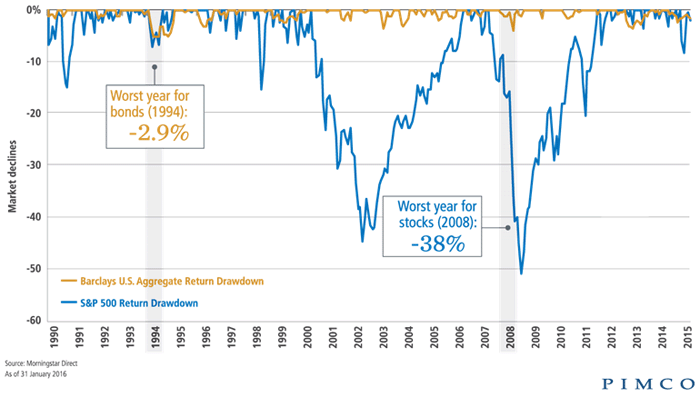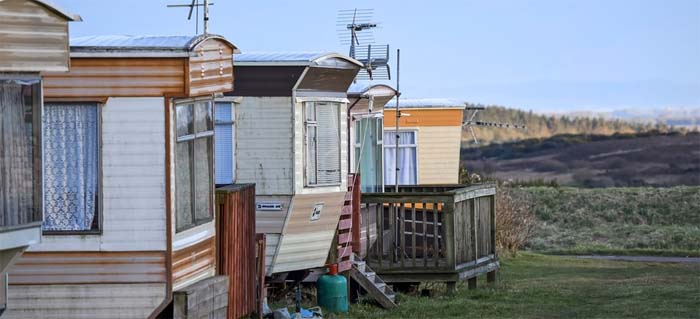

What’s the key to building wealth?
Multiple income streams.
At least that’s what millionaires will tell you. 65% of them have at least three income streams, and nearly 1/3 have 5 or more income streams.
So if you’re still tied to your day job, and you’re serious about reaching financial freedom, then ditch the cars, jewelry, and luxuries. Instead, let’s look into spending our money on the ultimate status symbols: income producing assets.
There is no lower, middle, or upper class. There is the investor class and the people who have to work for a living.”
I’ve always had a special fascination with idea of money flooding in from all directions. I don’t know why, but any time I hear of somebody making money in some oddball way, my eyes light up, and I file it under “Great idea! Life Goals…”
Sure, working your way towards a really high paying salary is cool, I guess. But transforming yourself into a business mogul, with money flowing in from all your different successful ventures? Now that’s winning the money game…
Over the years, this little fascination has left me with more ideas than I know what to do with. Unfortunately, I don’t have unlimited cash to invest in all these possibilities. (yet!? maybe!?) So, in case you’ve got more money laying around than you know what to do with, allow me to introduce…
The Official Money Wizard List of Income Producing Assets
Oh, and before we get too deep into this, no matter which asset you’re invested in, I continue to recommend Personal Capital. Their free software automatically tracks the performance of your income producing assets, including monthly cash flow, annual return, and even free fee analysis. All in one, easy to use dashboard.
The result? Your investment tracking becomes almost as easy the money you’re getting from all your income producing assets.
1. Savings Accounts or Money Market Savings Accounts
Probably the most basic income producing asset in the world, and also one of the least profitable.
While these two both pay slightly higher interest rates than a regular ‘ole checking account, you’re still gonna be hard pressed to make any meaningful income from these ultra-safe choices.
Unfortunately, most people never get past this stage in their investment journey. Of course, we’re just getting started…
2. Certificate of Deposits (CDs)
No, not those antique silver disks. (Yes, you’re getting old!)
Certificate of Deposits are like savings accounts, except your bank won’t allow you to access your money for a certain amount of time without incurring a penalty.
Banks like CDs because they get to keep and use your money for a longer amount of time, without having to hold your cash on hand in case you get a wild hare to buy the latest infomercial special. You like CDs because they pay higher interest rates than cash in a savings account.
A 6-month, $500 CD paying 5% interest was actually my first investment ever. Man, did I feel like the coolest 16 year old around with my “retirement acccount.” I’ll never forget that intoxicating feeling of getting paid money just because I had money. What a rush!
Welcome to the world of investing, little Money Wiz.
In today’s low interest rate environment, you’re lucky to find a CD paying any more than about 2%. And while you might not even beat inflation at those rates, CDs are FDIC insured up to $250,000, so they’re risk free.
3. Interest Paying Bonds
Bonds are basically IOUs from businesses to investors. You invest a fixed amount into a bond, and the company agrees to pay you a certain percentage back.
Of course, this is a simplification. You can purchase bonds from all sorts of entities, including:
- Companies (aka Corporate Bonds)
- Large, stable companies (Investment Grade Corporate Bonds)
- Small, ultra-risky companies (Junk Bonds)
- The federal government (Treasury Bills)
- Sections of the federal government (Agency Bonds)
- State and local governments (Municipal Bonds)
- Foreign companies or governments (Foreign Bonds)
Interest rates obviously vary significantly, depending on your type of bond and the current interest rate environment. But in general, you can expect bonds to yield anywhere from 1-4%.
Investors typically enjoy bonds for the stability of their fixed payments and the stability of the underlying price of the bond itself. While stocks tend to fluctuate wildly in price, the price of bonds is much more stable by comparison. Here’s a chart showing the worst decline in the past 25 years for the overall stock market vs. the overall bond market:

4. Dividend Paying Stocks

Now we’re getting to something with real wealth building power!
When you purchase stocks, many of those companies pay out a portion of earnings to shareholders on a regular schedule. These are called dividends, and ooh-wee… let me tell you – There’s few things more exhilarating than a big fat check with your name on it, courtesy of your stock market investments.
Typically, dividend paying stocks are the larger, more established companies. In fact, there’s a whole set of stock market darlings known as “The Dividend Aristocrats” who have earned their title by increasing dividend payouts for 25 consecutive years or more. (Currently, Proctor & Gamble and Dover Corp. are neck and neck, with 61 and 62 years straight years (!!) of dividend increases, respectively.)
The percentage rate of dividends varies by company. If you’re an investor in EcoLab, you’re currently looking at 1.12% dividend rate. If you felt like juicing up those dividend yields, you could always move some money to a company like AT&T, whose annual dividend yield is 6.05% right now.
Things get really exciting when you realize that for someone capable of living off $30,000 a year, a $496,000 investment in AT&T could fund their whole lifestyle!
Did I mention that if dividends represent your only income source, a married couple can earn up to $75,900 of dividend income a year without paying any taxes?
The easiest way to gain some dividend exposure is through index funds, like Vanguard or even Betterment. Yep, index funds pay out dividends too, which makes sense when you consider the index includes these same dividend paying companies.
Currently, my favorite index fund, Vanguard’s VTSAX, is paying dividends at a little less than 2%, due to the market’s historically high prices and growth of many large technology stocks, which aren’t currently paying dividends.
5. Peer to Peer Lending
C’mon, you didn’t think I’d keep this list to usual old advice, did you?
Peer to Peer lending is a growing market of “banking” which serves to cut out the large financial institutions from the lending process.
The idea is simple: since the dawn of time, consumers have had debt. Typically, they carry this debt through credit cards, banks, or other high interest rate options. With peer to peer lending, those consumers go straight to other peers as a money source.
As in investor, you’re playing the role of “bank” by providing your money to a consumer. In exchange for lending out your money, the consumer pays you interest (through an SEC regulated intermediary, like Lending Club).
The biggest risk, obviously, is that consumers default on their loans, which impacts your return on investment. Plus, there’s a little bit about Lending Club’s CEO recently resigning after violating the company’s business practices. Hey no reward without risk, am I right?
Mr. Money Mustache ran a five-year Lending Club experiment on his blog. He earned 13% for several years before experiencing a decline in performance down to 7%, causing him to withdraw his money.
6. Single Family Rental Houses

The classic rental property. While stock market investors mostly rely on appreciation, rental property represents the cash flow special. The single family rental home is where most real estate investors get their start, and a good rental house can be a cash flowing machine for its owner.
The single family rental carries the advantage of easier management. With less tenants, less appliances, and overall, less things to break, single family properties can have less headaches.
Plus, the barrier to entry is pretty low. When it comes time to move, keep your old house instead of giving a realtor 7% of the selling price, and voila! You now (hopefully) have an income producing asset on your hands.
7. Multi-family Rental Properties (Duplexes, Triplexes, and Quads)
If you have a single family rental home, you’re a undoubtedly a rental owner. If you’re managing a multi-family rental, you just might be a full-fledged landlord!
By having multiple tenants under one roof, multi-family properties carry a certain economy of scale that single family homes struggle to compete against. It’s a lot easier to stomach the idea of some foundation work when that same foundation supports two, three, or even four different paying renters.
In doing my own research for my first rental, I find it much easier to get the numbers to work on multi family properties than their single family counterparts.
Of course, like any investment, multi-family properties aren’t perfect. For one, there’s a smaller supply of them, and typically, the only buyers interested are other investors, which can make finding a good deal much more difficult. They also carry more risk – they usually cost more money, require larger initial capital outlays, and you’re more exposed to location related risks when you have multiple rentals at one address, rather than spread across several locations.
8. Tycoon Status – Apartment buildings
Now we’re getting to big-shot mogul territory.
A $20 increase in rent won’t move the needle much when you’re only managing a couple of rentals. But now let’s say you’re managing a 12 unit apartment building. That same $20 increase in monthly rent creates nearly $3,000 in additional annual revenue.
And this is where things get interesting. With large apartment buildings, small changes to operational efficiency can create big changes to the bottom line, and a savvy manager can leverage this scale to create a well-oiled cash flowing machine.
9. Slumlord status – Trailer Parks

If you want to get rich, sometimes you gotta get your hands dirty. And I can’t think of a much dirtier investment than trailer parks.
Trailer parks typically come in two management structures:
1) Parks own the land plus the mobile homes, and owners receive a combined rental payment for the whole shebang, similar to an apartment complex. This obviously carries the concern that tenant in trailer home #3 accidentally blew up your home when cooking up this week’s batch of meth, so this investment idea makes me a little nervous.
2) What I find far more attractive is the other, more common trailer park setup. Park investors own the land, and the tenants own the actual mobile homes while paying monthly rent for their trailer’s lot. This obviously transfers the risk of property damage to the owner, and the lot rentals still offer really attractive rates compared to other real estate options.
What sort of returns are you looking at with a trailer park investment?
Here’s a breakdown of how a relatively average trailer park can sport an 18.6% cap rate, which is two to three times typical rental benchmarks.
Impressive, but you’re probably not looking forward to collecting rent from trailer park residents. Which brings me to the next advantage of this asset class.
With the ability to squeeze so many lots on a single property, rental prices per lot are relatively low to the property’s overall value, which lets you adopt the property manager approach, similar to apartments. You supply a free lot to an onsite property manager so long as they deal with the dirty work, turning this potential headache into a surprisingly passive income producing asset.
10. Short Term Rentals
With the rise of Airbnb, VRBO, and others, it’s never been easier to rent out a place for a couple of nights. Some owners find it more profitable to rent out their property to a lot of different people over a short time, rather than the typical rental arrangement of a one single tenant for a long time.
Of course, this comes with the added maintenance, wear and tear, and hospitality needed for managing lots of different customers, but the rewards can certainly pay off.
Paula Pant completed a public Airbnb experiment on her blog, and good news! She found her rentals did earn more as short term rentals. The catch? Those increased returns were mostly the result of good old fashioned sweat equity.
On the other hand, investors like Zeona McIntyre have successfully used short term rentals to build up a rental empire and reach early financial freedom. Like any investment worth it’s weight in risk, your mileage may vary!
11. Vacation Rentals

Ahhh…. doesn’t that sound like the life!? Owning a dream retreat, and getting someone else to foot the bill!
Sure does, for you and everyone else.
While some investors certainly have success producing income from their vacation rentals, I’ve found these things tend to be a bit of a trap for most investors.
This irresistible idea of owning a slice of luxury usually causes vacation properties to sell at a really high premium and carry some heavy ongoing operating costs. This might be fine for the rich dude willing to pay for his dream getaway, but it puts a real squeeze on the investor looking for an income producing asset. Here’s a nice breakdown by zillow outlining the common vacation rental trap.
IMO, vacation rentals tend to be a nice way to offset the costs of owning a luxurious second place, rather than a solid income producing asset.
12. Real Estate Investment Trusts (REITs)
Ever dream of being a landlord, but the idea of tenant calls and plumbing fixtures has you running for the hills?
Enter REITs, the stocks of the real estate world. Real Estate Investment Trusts are companies which own, invest in, or manage income generating real estate properties. REITs trade on the stock exchange, and you can purchase them just like you would the share of any other company.
Personally, I’ve invested in Vanguard’s REIT Index fund (VGSLX) for several years, which has yielded between 3-4% in that time. The coolest part? With the purchase of one share, I’m suddenly the landlord of residential rentals, commercial real estate, public storage units, and everything in between.
By law, REITs have to distribute over 90% of their earnings to shareholders, which can lead to some seriously high dividend rates. You have to be careful though, as high yielding REITs tend to be extremely volatile.
Want to get really crazy with it? You could buy REITs using 20% of your own money and 80% borrowed money. This approach does a decent job replicating the same leverage experienced when buying a rental property with a 20% downpayment.
Around this time, it’s important to remember the gold rule of finance – there’s no such thing as increased returns without increased risk.
13. Farmland

You don’t have to be a farmer to profit off farmland.
39% of all farmland in the United States is rented or leased, so if you can’t grow an ear of corn to save your life, you still have a chance to get a little agricultural with your income streams.
By purchasing a piece of agricultural real estate, you can then rent out your land to farmers looking to expand their operations. This allows the farmers to maintain their capital for other uses, while you collect monthly or quarterly rent checks.
Of course, you can’t just buy a random piece of real estate and hope to start growing crops on it. (Sorry, your backyard garden in city limits won’t cut it.) In fact, the land’s soil conditions have to be right for commercial crop production, and nearly all farmable real estate is already accounted for. In fact, premier pieces of farmland, like high quality cropland in the middle of Iowa’s corn belt, can sell for $10,000 per acre.
Less prime pieces of farmland can be purchased for $1,500 to $3,000 per acre, and can often rent for $50 to $250 per year.
Plus, renting farmland can provide your portfolio with some strong diversification, since agricultural boom-bust cycles tend to have very low correlation from what us city slickers consider to be the “regular” economy.
And while farming is certainly a tough job, the agricultural industry receives strong support from several federal government programs, which could help protect your rental incomes more than other real estate investments.
14. Timberland

Who says money can’t grow on trees?
When you own a timber operation, your money literally can.
As trees grow, they add more volume and therefor become more valuable for timber harvesting. In good soil, some timber species can grow as much as 3-4 feet per year and reach heights over 100 feet at maturity. These big trees can sell for big bucks!
Sure, it takes a big of patience. Depending on the type of tree, from seed planting to maturity takes 15-30 years. Soft woods, such as pine, are ready for harvest in just over a decade, while hard woods like cherry oak or maple take the longest to mature.
Bare timberland can be purchased for $100-500 per acre, and a mature acre of timberland can be harvested for $500-2,000 per acre. Certain tree types, such as Walnut, whose straight-grained wood is desired for furniture, veneer, and gunstocks, can sometimes produce over $100,000 of timber per acre!
Occasionally, the trees need to be thinned to encourage faster, straighter growth, but even these culls can be sold to help cover operation costs.
Want to double down? Certain trees, like walnut or chestnut, can start producing nuts after 3-10 years, and these nuts can be sold to generate additional income. Other producers double crop their timberland (planting trees far enough apart to grow other crops in between) or allow livestock to graze on the land for yet another income source.
The best part? Trees keep growing, rain or shine, and so does their value. In total, timber typically increases in value by 2-14% per year, with taxes deferred until harvest.
From 1905-2005, timber outpaced inflation by 3% per year, and the NCREIF Timberland Index outperformed even the S&P 500, with an average annual return of 12.88% per year.
15. Basic, boring businesses.
Just like with the stock market, investing directly into boring businesses tends to be surprisingly profitable.
If investing is entertaining, if you’re having fun, you’re probably not making any money. Good investing is boring.” – George Soros
There’s not enough words on the internet to discuss all the possibilities here, but rest assured, there’s plenty of classic income producing businesses a savvy investor could boost their portfolio with.
Laundromats:
We’ve all seen that rundown laundromat in a bustling part of town. Either somebody’s using it as a front for money laundering (literally the original source of the term, btw) or equally likely – some owner is sitting on a total cash cow.
Laundromats have less than 1 full time employee, and minimal ongoing expenses. Here’s a napkin math breakdown of how an average laundromat can earn its owner $46,000 a year in passive income.
Car Washes:
Your startup costs and ongoing revenue will vary by car wash type. Self-service car washes have the lowest start-up costs and bring in monthly revenue of $1,500 per bay, according to the US Census Bureau. On the other end of the spectrum, the average large tunnel or conveyor belt car wash brings revenue of $686,000 per year.
Coffee Shops:
Thanks to Starbucks making expensive coffee cool, high end coffee shops are popping up all over the country. Coffee and tea costs pennies to make, yet sells for $3-5. Any businessman loves those numbers.
Your biggest investment will be in location and ambiance. A trendy design can make or break your customer’s perception, and will allow you to charge more for the drinks. If you really want to score points with the coffee connoisseurs, you’ll need to roast your own beans. Industrial roasters cost upwards of $10,000, but the street cred you’ll gain with hipsters can be priceless.
Dive Bars:
Probably the only business in the world that gets rewarded for neglecting property maintenance. Cheap drinks at even cheaper input costs.
Late Night Munchie Spots:
If you’ve ever been to New York City and seen the mile-long food cart lines at 2 AM, you realize the potential here. Some of the best cash flowing businesses in the world are these low overhead, high margin options. Think random food cart, pizza by the slice, etc.
16. Franchises

Remember the last time you visited McDonald’s, and that wonderful conversation you had with the store’s owner?
Of course you don’t, because those store owners are never there. They outsource all the day to day operations to somebody else, which turns their franchise purchase into a pretty passive income source.
A franchise purchase grants you the right to use a parent company’s trademarks, trade secrets, and proven business plan in exchange for a percentage of the location’s profits.
The requirements to starting a franchise varies by brand. McDonald’s claims one of the most expensive franchise fees, at $45,000, and the initial investment to build or purchase a store ranges between $1 to $2.2 million dollars. Plus, they require you to have a whopping $500K of liquid assets.
Your return for investing that sort of cash? Well, you’d need to request an investor package to know for sure, but the average McDonald’s location spits off $2.6 million of sales per year.
Different franchises require different time commitments from the owners though. Chick-Fil-A, for example, has one of the most competitive franchise programs in the country. They accept less than 0.4% of franchise applicants, and they require owners to be in store at least 30 hours a week. In that case, you’ve basically just bought yourself a part time job.
Other franchises, such as Subway, accept a much higher percentage of applicants and allow absentee ownership, which is a much more investor friendly arrangement. The average Subway’s start up costs are only $116,000-$253,000.
17. Websites
You probably knew websites could make money, but did you know there’s a whole market of people buying and selling websites?
Just like any other assets, online business can be bought, sold, traded, and flipped. Flippa.com is the largest marketplace for small-mid size websites.
You’ll need some technical know-how to keep from running your newly purchased online company into the ground. And if this blog has taught me anything, it’s that even running an online diary is way more work than you’d ever expect. But the fact remains, websites can be low overhead, profitable businesses, and the space remains under utilized for many investors.
18. Royalties
Royalties come in many shapes and forms, but music royalties are the most common. Music royalties are payments made to a song’s copyright owner for the right to use.
That song used in the latest car commercial? Eminem is singing all the way to bank, because Chrysler has to pay him for each use.
Royalties can earn big bucks, too.
Any guesses on the highest earning royalty song of all time? C’mon, you’ve definitely heard this one…
It’s Happy Birthday!
The song was originally penned for a kindergarten class back in the 1800s, and its copyright is still valid. In 1990, Warner Chapel bought the song’s royalty rights for $15 million. That might sound like a ton, but licensing the song costs $25,000 a pop, and the song reportedly spits off $2 million a year for those investors.
(If you’ve ever noticed restaurants singing their own spins on a birthday song, that’s because it’s actually illegal to sing Happy Birthday in public to a group of unrelated people… until you fork over the royalty fees.)
Unless you’ve got some serious connections to the industry’s big wigs, you’re probably not buying Happy Birthday any time soon. Regular folks can invest in smaller, up and coming royalties though, through a site like RoyaltyExchange.com.
PS – I said it earlier, but Personal Capital is awesome enough to repeat one last time. Their free software automatically tracks the income produced from your assets and even monitors how much you’re spending. So you get awesome monthly cash flow breakdowns, all in one easy to manage login.



Wow, great list of income producing assets Money Wiz!
I think you covered all of the major ones! The only one I can think of right now that’s missing is owning mineral rights on mineral rich land.
It might sound like gambling, but I know a group of people that make big money collecting checks from oil companies. Other than the paperwork it’s entirely passive.
Very interesting, Mr. Tako! Maybe one day I’ll have to update this to a 19 part list!
Wow, Mr. Money Wizard!
I am shocked at how dismissive you are of trailer park residents as stated in Income Producing Asset #9 in your article. It’s fairly obvious that living in a trailer park is a foreign concept to you. I haven’t lived in one myself, but have friends who have lived or do live in this arrangement. I can assure you that the residents are not all low-class drug dealers producing meth!
Oh c’mon, if you’re a regular reader of this site, I’d hope you’d know me enough to recognize when I’m adding a little hyperbole and humor to keep a topic from boring out. Of course I don’t think park residents are all drug dealers.
I’ve been researching trailer parks for years, and I’m certainly aware there are parks out there (and residents!) so nice, they’d blow my own neighborhood away. For Pete’s sake, I’m the guy who was ready to pull the trigger on living in a houseboat community, which is literally a floating trailer park.
Yes we are.
My friend had once told me about how timber could be a great resource to invest in. Back then I had thought he might be joking, but looks like he was pretty serious!
Great list, I’m looking to add a couple passive income streams to my own portfolio soon 🙂
Thanks! Timber looks to be pretty awesome, but just might be the most patience requiring investment ever.
You are right thx
Great list of business and investment options. I liked your quote about there being the working class and the investment class. That is spot on. You either have it or you don’t. There is no point in splitting hairs.
Thanks Dave!
Here’s number 19: writing options. I sell puts on individual stocks each month for consistent income. I sell covered calls on stocks I own for additional income as well.
Mentioned here:
https://firechecklist.net/2018/05/13/passive-income/
Interesting strategy Mr. FIREby2023!
Nice list!
It’s been fun reading your story over the last few months. Love to see the hustle in the younger part of my generation.
I would add hard money lending as another item to the list if/when you ever get around to updating it. With platforms like PeerStreet, this has become a very passive and easy income stream. I’m personally generating about $7,000/year here.
Cheers,
Dom
Thanks Dom, I like the suggestion!
And thanks for stopping by. I enjoy your story as well, and have been reading your site for a few years now.
Great post! I own a ton of real estate and dividend paying stocks. I almost about a laindromat earlier this year too. Hope people find a few of these ideas that work for them. Passive income is wonderful.
Why did you ultimately ass on the laundromat?
Quick question on #12 REIT’s. How would you go about borrowing money to purchase them. Are you talking about taking out a loan from a bank? I’ve never thought about borrowing money to buy stock but it sounds like it can be very smart especially if the market is down and you don’t have that much money to invest. Very creative!
I was wondering the same thing too. What are you thoughts Money Wizard?
Same here! How does this work?
You would need to open up a margin account with a brokerage firm like Fidelity, etrade, etc.
Use Interactive Brokers. Better margin rates.
Also, they’re better for selling puts.
Hey! I’ve checked your article, and have a question. In my country I can get CDs currently between 6-7% and are government insured (just like FDIC in US).
Based on that, I’d belief I could cross off several recommendations from your list. What would be your one or two TOP recommendations that can earn more than an anual 7% return?
Thanks!
Luis from Peru
Would Cash value life insurance or fixed indexed annuity considered sources for passive income?
I’d argue a fixed indexed annuity is, but cash value life insurance is not. I’m not a fan of either, so I excluded both.
If you have cash value on a whole life policy you can take it out as a lone, it’s certainly an option. But I strongly recommend it, as you are required to pay it back,and it gains interest. Your best bet is to get whole life as soon as possible (it gets more expensive the older you get, but when you get it your price and age are locked) and your cash value build. Then most generally, You ca do a reduced paid up option at 65 and use your cash value for premiums and never pay on it again depending on your policies (If your policy allows lpu65). As for annuities, I would have to write a book
I disagree, but to each their own.
The insurance to have that will blow all other insurance out of the water is, an (IUL)Index Universal Life insurance. You can also withdraw cash tax free… better than a 401k. I’m not saying not to have a 401k, but your money grows plus have a death benefit. I am an insurance agent and just wanted to mention that.
Appreciate the perspective, and while I agree IUL might be the best of the whole life options, that’s still not saying much in my opinion. From what I’ve seen, IUL costs way too much compared to a simple portfolio of low cost index funds.
Great list, and super valuable info… will follow you and watch for your emails.
I am only in real estate right now, but just sold a property, so I am ‘looking’ …
Awesome! Welcome aboard!
Really enjoyed the list. New to investing but I’m a bit of a cerebral junkie… I love learning, so this is great for me.
Any other similar posts for me to read?
Thanks,
Norm
Check out:
https://mymoneywizard.com/best-of-my-money-wizard/
This list was awesome. Just trying to find resources out there on what to start investing in. Do you have a list of Franchises to look into?
Hey I wanna get started in investing making my money work for me, but I dont know where to get started? Help!:/
Sure, check out the best of my money wizard or anything in the investing section.
Similar to the trailer park idea, storage units… I think it definitely depends on the area but a solid market could make for some strong ROI.
Also – parking lots.
One of the most helpful articles I have ever read. Thank you
What are your thoughts on REITs such as Fundrise and Realty Mogul?
Great list. Covers a lot of ground. Will read future articles to broaden my passive income portfolio, as a retiree. Thanks.
At 73 I have approx. $100,000 to invest for passive income. Its all I have. My bank keeps pushing a “financial adviser” on me. Admittedly I don’t know much about generating “passive income”. So I am reading up on it. My question is can I invest on my own or do I need a financial adviser who doesn’t even live in my state? Please respond. Thank you… I’m learning as much as I can.
The purpose of a financial adviser is for them to help you run your accounts, hencing, you are not financially literate. Of course, there is a percentage to pay financial advisers, it depends. Now, a piece of advice I can recommend regarding passive income, straight information from the book, “Rich dad, Poor dad.” by Robert Kiyosaki. First, understand the difference between an asset and liability. One of them puts money in your pocket (assets), the other takes money out of you pocket (liabilities). Of course you would invest in something that puts money in your pockets, assets! It is all about knowledge and financial intelligence, keep learning!
I’m trying to research a comprehensive list of farmland fund managers – focus on US, Canada, SA and Australia. Any additions or thoughts on this so far would be appreciated:
Adecagro
Agcapita
Area One
Bonnefield
Brookfield
Ceres
CPPIB
Cresud
Farmland LP (REIT)
Farmland Partners
Fierra Comox
Gladstone (REIT)
Hancock
Homestead Capital
Laguna Bay
Macquarie
NCH Agribusiness
Proterra
Summit Agriculture
TIAA / Nuveen
UBS Agrivest
Veripath
And remember to have some honor when investing, create value instead of speculating.
For example, if you purchased a mobile home park make the lot rent as affordable as possible for the people or better yet, sell the lots so the people could own an asset themselves.
Also buy a business instead of buying up all the family homes and driving up the prices.